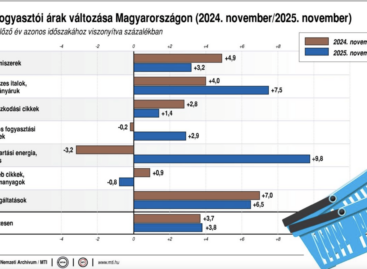HUN-REN ATK researchers have discovered a new mechanism of resistance to plant virus infections
A new mechanism of plant resistance to viral infections was discovered by the researchers of the Plant Protection Institute of the HUN-REN Agricultural Research Center (HUN-REN ATK NÖVI) as part of an international collaboration, who investigated how the ‘Columbia’ tobacco species hybrid can effectively resist viral infections – he informed the MTI by the HUN-REN Hungarian Research Network on Monday.

Due to the effects of climate change and accelerated international food trade, more and more new plant pathogens are appearing in Hungary as well. For this reason, it is increasingly important to discover how cultivated plants are able to effectively resist the infection of the pathogens that constantly attack them with hitherto unknown methods of protection, they wrote in the announcement.
The plant hormone salicylic acid has been used in medicine for thousands of years as a pain reliever and anti-inflammatory
“It has long been known that salicylic acid is essential for our cultivated plants (e.g. tobacco, tomatoes, potatoes) to successfully resist infection by various pathogens, including viruses. Another key player in resistance to plant pathogens is a small antioxidant molecule, glutathione, which, among other things, also contributes to plant cells preserving their ‘youth’ for as long as possible”, they explained. According to the latest results of HUN-REN ATK NÖVI researchers, a tobacco species hybrid (Nicotiana edwardsonii ‘Columbia’) is highly resistant to infection by several viruses, such as tobacco mosaic virus (TMV) and tobacco necrosis virus (TNV). They found out that this tobacco species hybrid can effectively resist virus infection in such a way that, in addition to the overproduction of salicylic acid, glutathione is also involved in the plant’s defense after the attack of the virus.
The researchers also proved that this increased stress tolerance of the plants also protects against bacterial infections and tissue damage caused by a herbicide
In the case of infection by two plant pathogenic bacteria (Pseudomonas tabaci and Pseudomonas syringae pv. tomato) in the ‘Columbia’ tobacco hybrid, tissue death symptoms and bacterial growth could be detected to a much lesser extent than usual. If an aqueous solution of a herbicide (paraquat) was injected into the leaves of the plants, tissue death resulting from the treatment was also significantly reduced – the results were reported. According to the information, the results published in the scientific journal Molecular Plant-Microbe Interactions can contribute to the understanding of how certain plants are able to successfully defend themselves against multiple stresses (e.g. pathogen infections, environmental pollutants) and can be used in the future for both disease and abiotic stress in the breeding of highly resistant cultivated plants.
MTI
Related news
Ministry of Agriculture supports the food industry’s adaptation to new challenges
🎧 Hallgasd a cikket: Lejátszás Szünet Folytatás Leállítás Nyelv: Auto…
Read more >István Nagy: the total output value and profitability of agriculture have also increased
🎧 Hallgasd a cikket: Lejátszás Szünet Folytatás Leállítás Nyelv: Auto…
Read more >Energy costs can be reduced by up to a third with the Hungarian-developed LED system
🎧 Hallgasd a cikket: Lejátszás Szünet Folytatás Leállítás Nyelv: Auto…
Read more >Related news
The Hungarian Confederation of Economic Workers also spoke out regarding the inflation data
🎧 Hallgasd a cikket: Lejátszás Szünet Folytatás Leállítás Nyelv: Auto…
Read more >KSH: in November, consumer prices exceeded the values of the same month of the previous year by an average of 3.8 percent
🎧 Hallgasd a cikket: Lejátszás Szünet Folytatás Leállítás Nyelv: Auto…
Read more >In addition to jelly and marzipan Christmas candy, there are more and more specially flavored Christmas desserts on offer
🎧 Hallgasd a cikket: Lejátszás Szünet Folytatás Leállítás Nyelv: Auto…
Read more >






